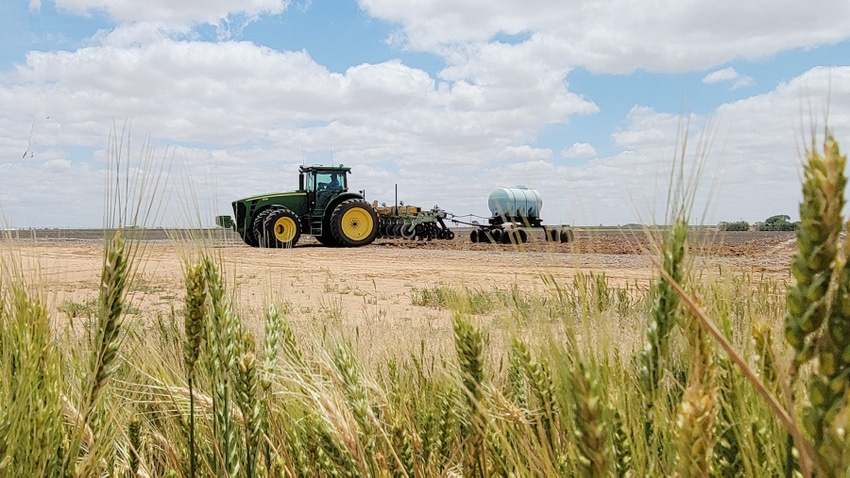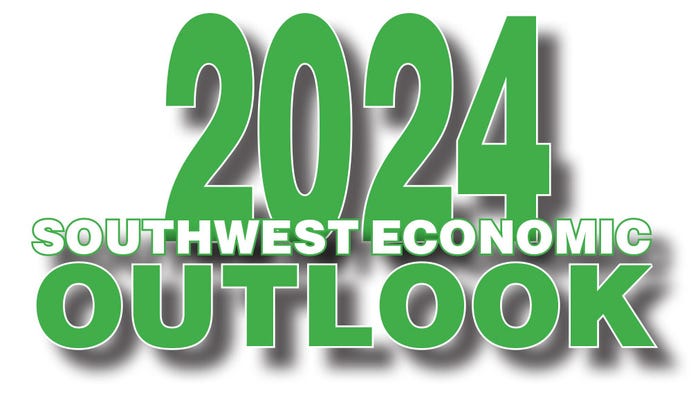
*This is the second article in our 2024 Southwest Economic Outlook series. Hear from Oklahoma State University and OSU Extension Service, and Texas A&M University and TAMU AgriLife Extension Service economists about the 2024 outlook.

The outlook of financial conditions for agriculture is intended to address the challenges and opportunities that likely lie ahead. However, any attempt at clarity for 2024 must begin with a review of the financial environment that prevailed during the past couple of years.
It would be difficult to find any businessperson, agricultural or otherwise, who hasn’t seen their financial situation impacted by the steady increase in interest rates. As of December 2023, the Federal Reserve has raised interest rates 11 times since the beginning of 2022, raising the Federal Funds Rate from essentially zero to 5.5%. This pace of interest rate increases hasn’t been witnessed since the early 1980s. Justification for these monetary policy moves is based largely on attempts to slow red-hot inflation that reared its ugly head in several different forms (demand-pull, cost-push, and wage-price spiral). Each type of inflation naturally emanated from the policy measures used to combat the global pandemic and stabilize a crippled economy.
Challenging production environment
The combined impacts of inflation and higher cost of capital resulted in a challenging production environment for agricultural producers. In the USDA’s November farm sector income report1, net farm income in 2023 was estimated to decrease 20% (inflation-adjusted) relative to the record levels of 2022; and net cash farm income was estimated to decline 24% (inflation-adjusted) relative to 2022.
Cash receipts from crop sales decreased 4% from 2022, largely due to lower receipts for corn and soybeans and animal/livestock receipts were estimated to decrease 5% following declines in proceeds for milk, broilers, eggs and hogs. Even cattle producers who saw record-level prices were unable to take full advantage of high prices due to widespread drought and/or reduced herd numbers. Also contributing to lower estimated net income in 2023, were lower direct government payments and higher production expenses.
Thanks to land value increases, farm sector solvency was estimated to be slightly stronger as asset values grew at a faster rate (up 7%) than debts (up 5%). However, liquidity (as measured by working capital – cash available to fund operating expenses after paying off debt to creditors due within 12 months) was estimated to decrease 5% in 2023. Other liquidity measures such as the current ratio and debt service ratio were expected to worsen similarly.
Borrowing costs, margin pressure
Higher borrowing costs and margin pressure will continue to have implications for agricultural lenders and agricultural borrowers in 2024. According to the Federal Reserve Bank of Dallas's most recent Agricultural Survey2, demand for agricultural loans decreased in the third quarter of 2023 for the seventh straight quarter. Loan renewals or extensions fell after increasing the previous quarter, while the rate of loan repayment dropped. Loan volume was down for all lending categories compared with a year ago. Simultaneously, 20% of member banks tightened credit standards for agricultural loans in the past three months compared with a year earlier.
Reported agricultural rates offered by Federal Reserve Bank of Dallas member banks for feeder cattle, farm operating, intermediate-term, and long-term real estate loans ranged from 8.8% to 9.39%, the highest levels since 2007 and 70-80% higher than two years earlier. USDA’s recently announced (Oct. 2023) lending rates for agricultural producers, indicated farm operating and ownership loan rates of 5.25%3, up from 2021 levels that landed in the 2% to 3% range.
As we arrive at 2024, we are reminded that the windshield is bigger than the rearview mirror for a reason and more useful when moving forward. Reflecting on the developments that have recently transpired helps to highlight the issues that agricultural producers must navigate today, but focus must be directed toward future expectations. According to the U.S. Energy Information Administration’s most recent short-term energy outlook4, projections for 2024 include modest growth in U.S. GDP of 1.5% along with an 11% increase oil prices. Both of these predictions imply the avoidance of a severe or long-lasting recession.
Interest rate-hike complete?
At the center of the “what’s in store for 2024” debate is one main question: Is the interest rate-hiking cycle complete? The consistent message by the Federal Reserve Board of Governors members is that even if rate hikes are finished for the time being, interest rates can be expected to remain higher for longer. Contradicting that viewpoint is increasing evidence and market sentiment that inflation is largely under control, and a slow-growing U.S. economy may only experience a mild or short-lived recession. In fact, as of early December 2023, an interest rate cut sometime from May to mid-summer is seen as increasingly probable. The realization of the soft-landing scenario (or not) and any policy responses to the myriad of unresolved geopolitical risks will most definitely determine the financial environment in 2024.
With all the things that have changed in the past two years, it is somewhat ironic that this outlook closes by focusing on management implications that seem to stay constant. On-going commodity price and input price volatility requires that attention be placed on managing and protecting price margins.
A review of the financing structure of the business should be, at a minimum, an annual activity with plans for seizing opportunities as they become available. Higher borrowing costs, however long they last, increase the hurdle that must be overcome with any financed venture.
Projects and expansion plans that had economic merit two years ago must be reassessed and evaluated if being considered today. The incentive to self-finance activities becomes more enticing with higher rates, but the pressure on liquidity must be acknowledged. Finally, whenever business or personal finances are concerned, maintaining a conservative cash cushion and retaining financial peace of mind is rarely a regrettable strategy.
References
1USDA. (2023). https://www.ers.usda.gov/topics/farm-economy/farm-sector-income-finances/farm-sector-income-forecast/. Accessed 12-04-2023.
2Federal Reserve Bank of Dallas. (2023). Agricultural Survey, Third Quarter of 2023. https://www.dallasfed.org/research/surveys/agsurvey/2023/ag2303 . Accessed 12-05-2023.
3USDA. (2023). https://www.fsa.usda.gov/news-room/news-releases/2023/usda-announces-october-2023-lending-rates-for-agricultural-producers. Accessed 12-05-2023.
U.S. Energy Information Administration. (2023). Short-Term Energy Outlook. https://www.eia.gov/outlooks/steo/. Accessed 12-04-2023.
Read more about:
Interest RatesAbout the Author(s)
You May Also Like




